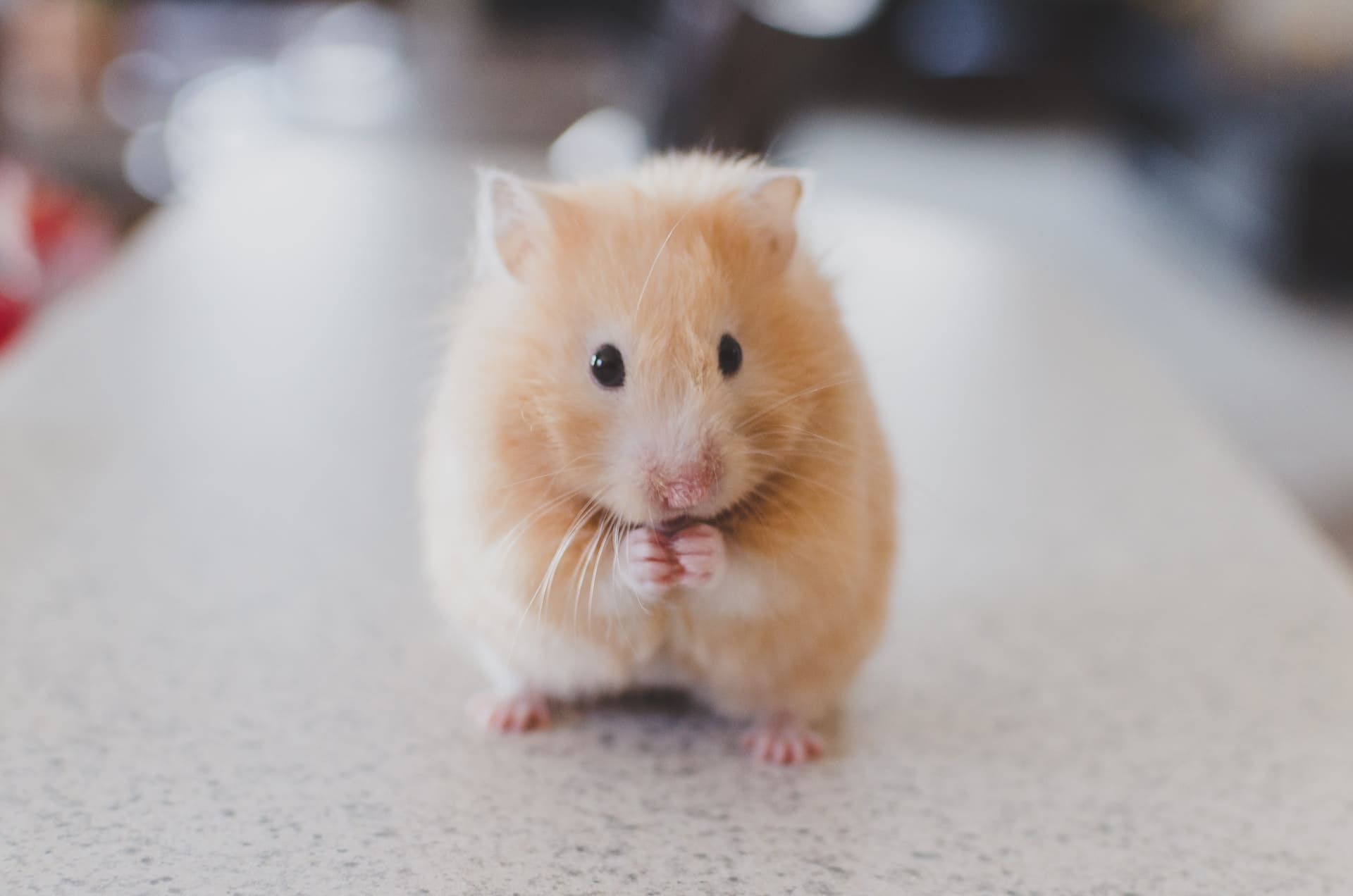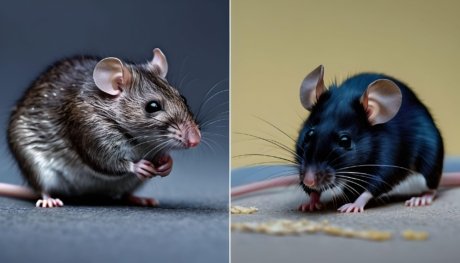Rats | 4 Types, Prices, Can Kept as Pet?, Training, Food, Care
Welcome to the fascinating world of rats! In this article, we will explore the intelligence and adaptability of these remarkable creatures. Discover their role as pets and subjects of scientific study, and learn essential care tips. Join us as we unravel the mysteries surrounding these captivating and often misunderstood animals.
Rat
Rats, those furry creatures that scurry around, often elicit mixed emotions among humans. While some perceive them as pests, it’s important to acknowledge the intriguing aspects of their existence. In this article, we’ll explore the captivating world of rat, shedding light on their behaviour, intelligence, and unique adaptations. Prepare to be amazed as we delve into the lives of these often misunderstood creatures.

- The Rat Family: Belonging to the Rodentia order, rats are small to medium-sized mammals known for their sharp incisors and long tails. They are highly adaptable and can be found in various habitats worldwide, thriving in both urban environments and rural landscapes.
- Intelligence and Problem-Solving Abilities: Contrary to popular belief, rats possess remarkable intelligence. In fact, they are known to exhibit problem-solving skills that rival those of some primates. Studies have shown that rats can learn complex tasks, navigate intricate mazes, and even recognize their own reflection.
- Social Behavior: Rats are highly social animals, displaying intricate social structures within their communities. They establish hierarchies based on dominance and maintain complex relationships.
- Adaptive Nature: One of the reasons for the rat’s success as a species is its incredible adaptability. They are opportunistic omnivores, meaning they can consume a wide variety of food items. This adaptability allows them to survive in diverse environments, utilizing their resourcefulness to find food and shelter.
- Rats as Pets: Beyond their presence in the wild, rat can also become beloved pets. Domesticated rat, also known as fancy rat, have been selectively bred for specific traits, such as temperament and coat colours. Many individuals find rats to be affectionate, intelligent, and interactive companions, challenging the stereotype that surrounds them.
Rat Vs Mouse
Here are the key differences between rats and mice:
| Rat | Mouse |
|---|---|
| Larger in size, typically measuring 9-11 inches (23-28 cm) in length (excluding the tail) | Smaller in size, usually measuring 2-4 inches (5-10 cm) in length (excluding the tail) |
| Heavier in weight, ranging from 7-18 ounces (200-500 grams) | Lighter in weight, typically weighing around 0.5-1 ounce (15-30 grams) |
| Longer lifespan, averaging 2-3 years (in the wild) and up to 4-5 years (as pets) | Shorter lifespan, averaging 1-2 years (in the wild) and up to 2-3 years (as pets) |
| Tails are thick, hairless, and scaly, measuring roughly the same length as their bodies | Tails are thin, hairy, and longer than their bodies |
| Known for their adaptability and ability to thrive in various environments, including both urban and rural settings | Also adaptable but often prefer indoor environments, such as homes, buildings, and fields |
| Generally less cautious and more exploratory, making them more likely to venture into open spaces | More cautious and tend to stay closer to walls and hidden areas |
| Can cause more damage due to their larger size and stronger jaws, capable of gnawing through wood, plastic, and even electrical wires | Can still cause damage but usually to a lesser extent compared to rats |
| Usually light brown or gray in colour, with some species having lighter underbellies | Usually light brown or grey in colour, with some species having lighter underbellies |
| Known carriers of various diseases, including hantavirus, leptospirosis, and salmonellosis | Can also carry diseases, but their potential for transmission to humans is generally lower compared to rats |
| Often regarded with more negative connotations and associated with a higher level of fear or disgust | Generally viewed as less threatening and are sometimes kept as pets due to their smaller size and perceived cuteness |
Kangaroo Rat
The Kangaroo Rat is a fascinating rodent with unique adaptations. It has powerful hind legs that enable it to hop like a kangaroo, showcasing remarkable agility and speed. What sets it apart is its ability to survive in arid environments without drinking water for extended periods. Its specialized kidneys minimize water loss, and it relies on moisture from its food, such as seeds and plants, to sustain itself. The Kangaroo Rat exemplifies nature’s incredible ability to adapt and thrive in challenging conditions.
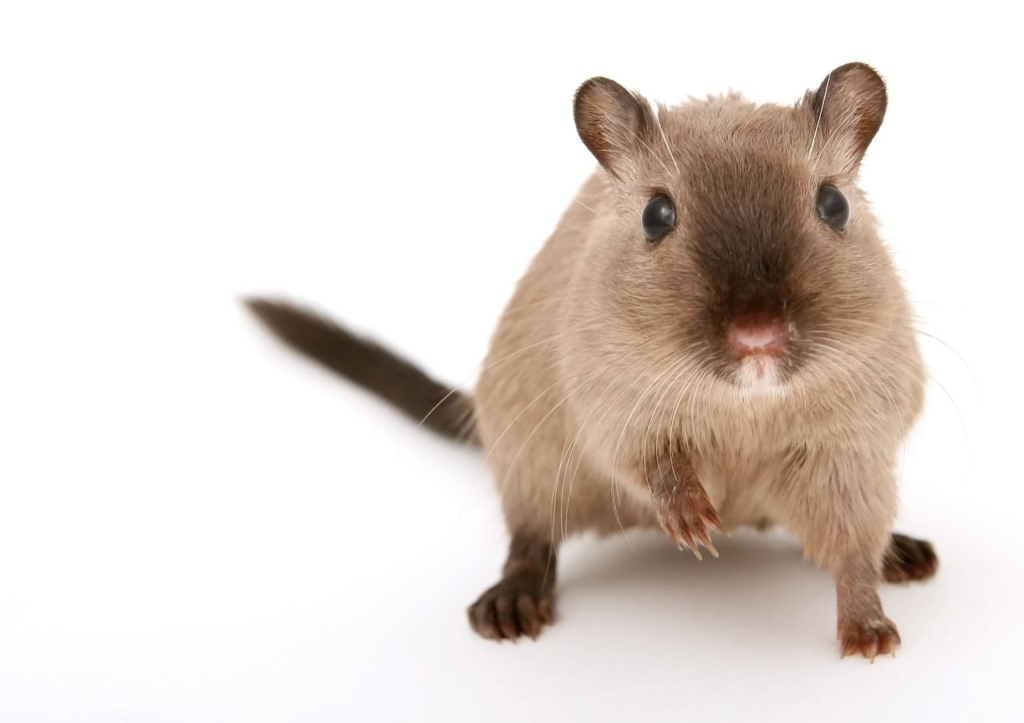
Kondana Rat
The Kondana Rat is a rare and enigmatic species that holds a sense of intrigue and fascination. Found primarily in the Kondana caves of Maharashtra, India, this elusive rodent has captured the attention of researchers and conservationists.

The Kondana Rat is known for its small size and secretive nature, making it a challenging subject of study. It prefers rocky areas, caves, and dense vegetation as its preferred habitat, thriving in these unique environments. However, limited research has been conducted on this mysterious species, leaving much to be discovered about its behaviour and ecological significance.
5 Types of Rats
Rats are a diverse group of rodents that can be found in various parts of the world. Here, we’ll explore some of the common types of rat, each with its own unique characteristics and habitats.
Norway Rat (Rattus norvegicus):

The Norway Rat, also known as the brown rat or sewer rat, is one of the most prevalent rat species. They have a stout body, typically measuring around 7-10 inches in length, excluding the tail. Norway Rats are excellent burrowers and are often found in urban areas, sewers, and agricultural environments.
Roof Rat (Rattus rattus):

Roof Rats, also called black rat or ship rat, are agile climbers known for their ability to scale trees and structures. They have a slender body, averaging around 6-8 inches in length, with a long, scaly tail. Roof Rat are commonly found in warm, tropical regions, and are skilled at accessing buildings through attics, roofs, and high spaces.
House Mouse (Mus musculus):

While not technically a rat, the House Mouse is closely related and often grouped together due to its similarities. House Mice are small rodents, typically measuring 2.5-4 inches in length, excluding the tail. They have a compact body, large ears, and a thin, hairy tail. House Mice are excellent climbers and are well-adapted to indoor environments, making them a common nuisance in homes and buildings.
Black Rat (Rattus rattus):

The Black Rat, also known as the ship rat or roof rat, is a slender and agile rat species. They have a body length of around 6-8 inches, excluding the tail. Black Rats are excellent climbers and are often found in coastal areas, warehouses, and agricultural settings. They have a long and scaly tail, larger ears, and are known for their ability to transmit diseases.
Gambian Pouched Rat (Cricetomys gambianus):
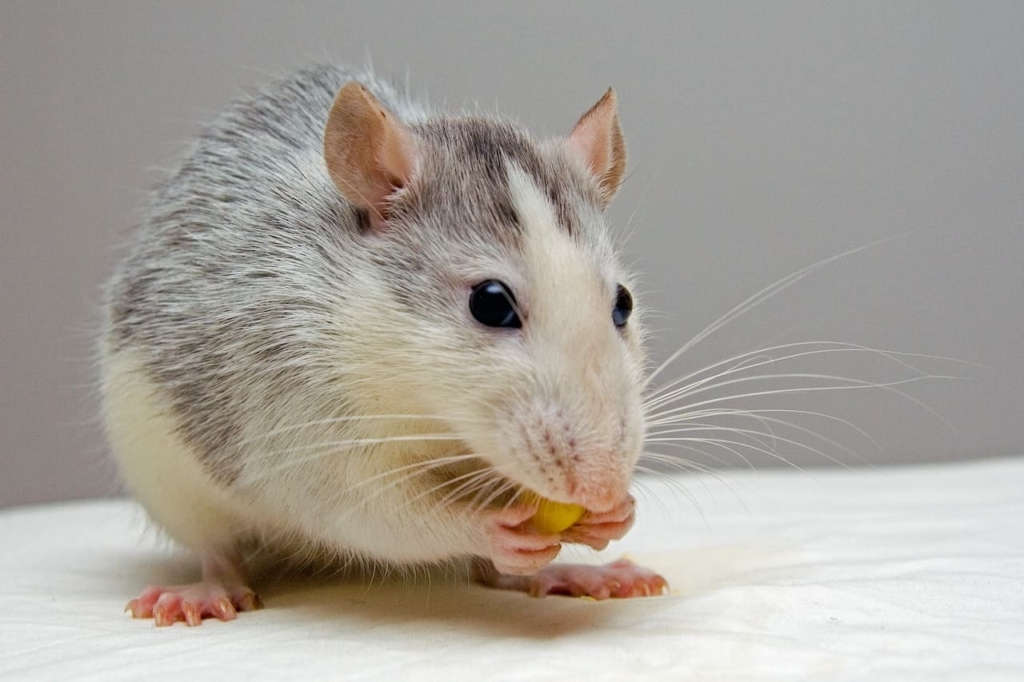
The Gambian Pouched Rat is a larger species of rat, often kept as a pet or used for detecting landmines due to their exceptional sense of smell. They have a stocky body, measuring around 12-18 inches in length, excluding the tail. Gambian Pouched Rat are native to sub-Saharan Africa and are known for their cheek pouches, which they use to carry food.
10 Colour Variations in Rats
Rats exhibit a wide range of colour variations, which adds to the diversity and intrigue of these rodents. From solid colours to patterns and markings, here are some common colour variations seen in rat:
1. Agouti Colour Rat:
The agouti coat pattern is one of the most common in rat. It consists of a mixture of individual hairs that alternate between multiple colours, typically a combination of brown, black, and grey. This gives the rat a salt-and-pepper appearance.
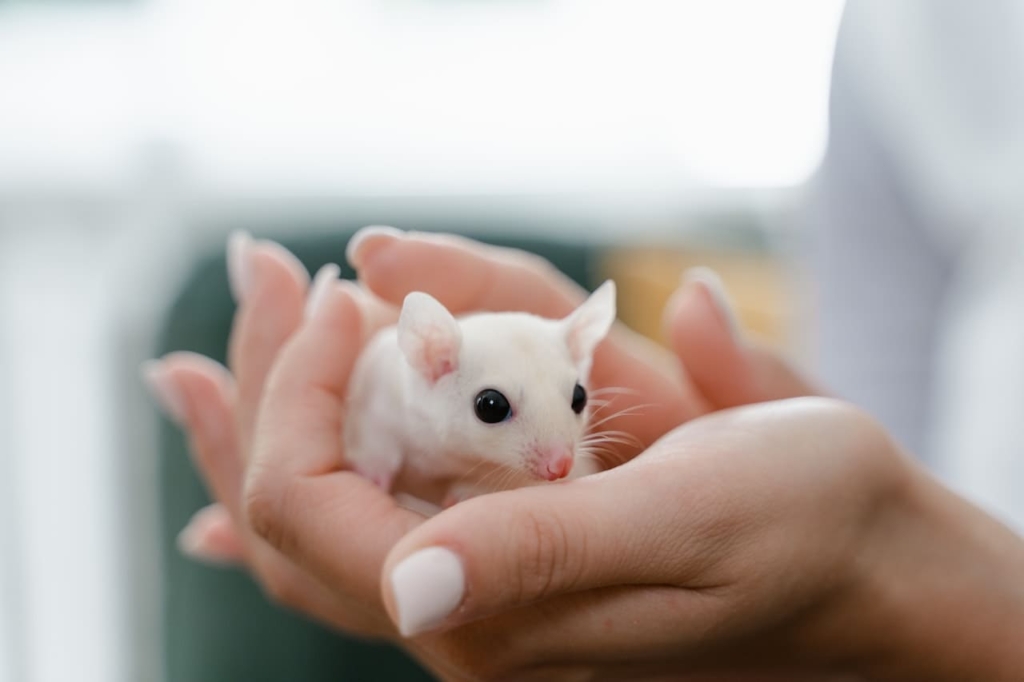
2. Self Colour Rat:
Self-colored rats have a solid coat colour throughout their body without any distinct markings or patterns. These can include shades of black, brown, white, or even more unique colors like blue or lilac.
3. Hooded Colour Rat:
Hooded rat have a solid colour on their bodies with a distinct contrasting patch of white fur on their heads, resembling a hood. The colour of the hood can vary, and it’s often accompanied by white markings on the chest and paws.
4. Berkshire Colour Rat:
Berkshire rats have a solid-coloured body with a white belly and white feet. The white markings extend up the legs, creating a striking contrast against the main colour of the coat.
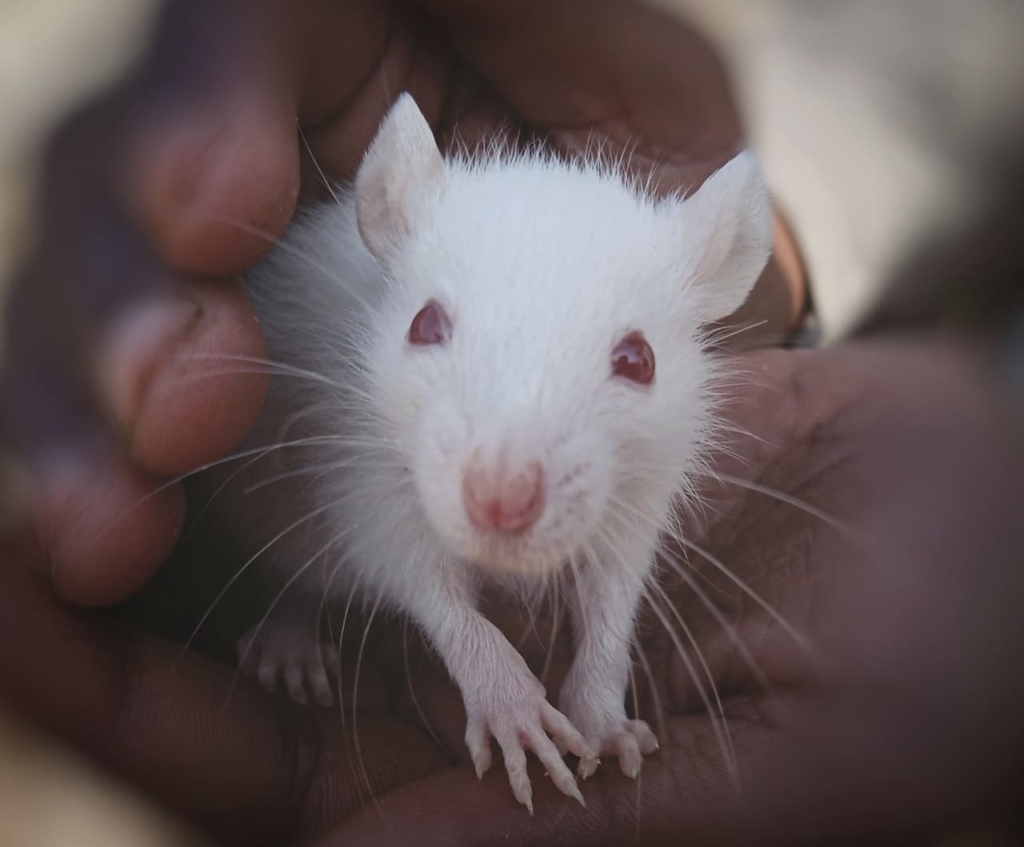
5. Dalmatian Colour Rat:
Dalmatian rat display white fur with scattered spots or patches of another colour. These spots can be black, brown, or even more unusual colours like red or cinnamon, giving the rat a dappled appearance reminiscent of Dalmatian dogs.
6. Siamese Colour Rat:
Siamese rats have a lighter body colour, usually a beige or fawn tone, with darker points on the nose, ears, paws, and tail. The contrast between the body and the points is quite striking.
7. Marten Colour Rat:
Marten rat have a dark-coloured bodies with a lighter belly. The colour difference between the top and bottom of the rat is distinct, creating a two-tone appearance.
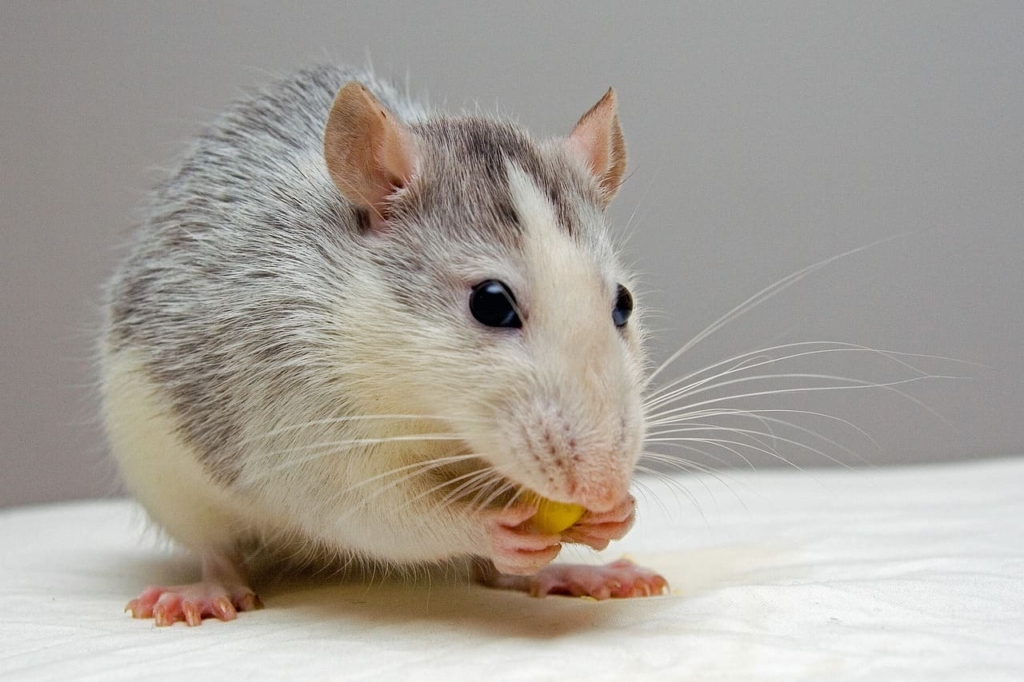
8. Brown Rat:
The brown rat, also known as the Norway rat or sewer rat, is a prevalent rodent species found worldwide. With a stout body and brown fur, these rats are skilled burrowers and can be found in various environments such as sewers, urban areas, and agricultural fields.
9. White Rat:
White rats, often bred for laboratory research, are a strain of the Norway rat (Rattus norvegicus). These rat have been selectively bred for their white coat colour and are commonly used in scientific experiments due to their ease of handling and genetic similarities to humans.
10. Black Rat:
The black rat, also known as the ship rat or roof rat, is a slender and agile species found in coastal areas, warehouses, and agricultural settings. With a sleek body, long tail, and varying fur colours from black to dark brown or gray, black rats are skilled climbers.

History of Rat
The history of rats is intertwined with human civilization, spanning thousands of years. Rat originated in Asia and gradually spread across the globe through trade and exploration. They have been both companions and pests throughout history, influencing agriculture, health, and even folklore. Their adaptability and resilience have made them a significant presence in our world.
Appearance of Rat
Rats are medium-sized rodents with a distinctive appearance. They have compact bodies, long tails, and small, rounded ears. The colour of their fur can vary, including shades of brown, black, grey, or even more unique colours. Rat have sharp incisor teeth that continuously grow, allowing them to gnaw through various materials.
Temperament of Rat
Rats are highly intelligent and social animals known for their curious and adaptive nature. They can form strong bonds with their human caregivers and even other rat. Rats are generally friendly and trainable, displaying affection and responsiveness to positive interactions.

Behaviour of Rat
Rats display a wide range of behaviours that are fascinating to observe. They are nocturnal creatures, meaning they are most active during the night. Rat engage in activities such as exploring their surroundings, foraging for food, grooming themselves and others, and engaging in social interactions. They also possess a strong instinct to gnaw, which helps keep their teeth healthy and in check.
Rat Price
The price of rats can vary depending on various factors such as breed, age, and location. On average, rats are relatively affordable pets, with prices ranging from $10 to $20 in the United States, £8 to £15 in the United Kingdom, and ₹500 to ₹1000 in India.
Prices for Different Breeds of Rats in the United States:
Fancy Rat Price in United States:
The price range for fancy rats in the United States is typically between $10 and $30. However, rare colour variations or unique markings can increase the price.
Dumbo Rat Price in United States:
Dumbo rats in the United States generally range from $15 to $40. Prices may vary based on the rat’s specific traits, such as coat colour or pattern.
Hairless Rat Price in United States:
Hairless rats in the United States can be priced between $20 and $60. The unique appearance of hairless rat often contributes to their higher price range.
Rex Rat Price in United States:
Rex rats in the United States usually range from $15 to $40. The velvety and curly coat of rex rat makes them popular, affecting their pricing.
Siamese Rat Price in United States:
Siamese rats in the United States generally range from $15 to $35. The distinctive colour pattern of Siamese rat can influence their price.
Prices for Different Breeds of Rats in the United Kingdom:
Fancy Rat in United Kingdom:
In the United Kingdom, fancy rats are typically priced between £10 and £20. Prices may vary depending on the breeder and the rat’s quality.
Dumbo Rat in United Kingdom:
Dumbo rats in the United Kingdom can be priced around £15 to £30. The rarity of dumbo ears may affect the pricing for these rat.
Hairless Rat in United Kingdom:
Hairless rats in the United Kingdom generally range from £20 to £50. The unique appeal of hairless rat can contribute to their higher prices.
Rex Rat in United Kingdom:
Rex rats in the United Kingdom are usually priced between £15 and £30. The soft and curly coat of rex rat may influence their pricing.
Siamese Rat in United Kingdom:
Siamese rats in the United Kingdom can be priced around £15 to £25. The distinct colour points of Siamese rat can affect their price range.
Prices for Different Breeds of Rats in Europe:
Fancy Rat Price in Europe:
In Europe, the price range for fancy rats is typically between €15 and €30. Prices may vary depending on factors such as the rat’s lineage and coat color.
Dumbo Rat Price in Europe:
Dumbo rats in Europe generally range from €20 to €40. The availability and demand for dumbo rat can influence their pricing.
Hairless Rat Price in Europe:
Hairless rats in Europe typically range from €30 to €60. The scarcity and unique appearance of hairless rats contribute to their higher prices.
Rex Rat Price in Europe:
Rex rats in Europe are usually priced between €20 and €40. The velvety coat of rex rats may affect their pricing.
Siamese Rat Price in Europe:
Siamese rats in Europe typically range from €20 to €35. The distinct colour pattern of Siamese rat can influence their price.
Prices for Different Breeds of Rats in India:
Fancy Rat Price in India:
In India, the price range for fancy rats is typically between ₹300 and ₹800. The cost may vary depending on factors such as the rat’s lineage, coat color, and quality.
Dumbo Rat Price in India:
Dumbo rats in India generally range from ₹500 to ₹1,200. Prices may vary based on the rat’s specific traits, such as coat colour or pattern, and the breeder’s reputation.
Hairless Rat Price in India:
Hairless rats in India can be priced between ₹800 and ₹2,000. The unique appearance of hairless rat often contributes to their higher price range.
Rex Rat Price in India:
Rex rats in India usually range from ₹400 to ₹1,000. The velvety and curly coat of rex rats makes them popular, affecting their pricing.
Siamese Rat Price in India:
Siamese rats in India generally range from ₹500 to ₹1,200. The distinctive colour pattern of Siamese rat can influence their price.
White Rat Price
The price of white rats can vary in different countries. In the United States, the cost for a white rat typically ranges from $10 to $30. In the United Kingdom, white rats are generally priced between £10 and £20. In Europe, the price range for white rats is typically around €15 to €30. In India, the price of a white rat can range from ₹300 to ₹800.
Rat Prices In Major USA, UK and Indian Cities
Here are approximate prices for different rat breeds in major cities across the United States, the United Kingdom, and India:
| Rat Breeds | Major US Cities | Price Range (USD) | Major UK Cities | Price Range (GBP) | Major Indian Cities | Price Range (INR) |
|---|---|---|---|---|---|---|
| Fancy Rat | New York City | $10 – $30 | London | £10 – £20 | Mumbai | ₹300 – ₹800 |
| Los Angeles | $10 – $30 | Manchester | £10 – £20 | Delhi | ₹300 – ₹800 | |
| Chicago | $10 – $30 | Birmingham | £10 – £20 | Bangalore | ₹300 – ₹800 | |
| Houston | $10 – $30 | Glasgow | £10 – £20 | Kolkata | ₹300 – ₹800 | |
| Philadelphia | $10 – $30 | Edinburgh | £10 – £20 | Chennai | ₹300 – ₹800 | |
| Dumbo Rat | San Francisco | $15 – $40 | Bristol | £15 – £30 | Hyderabad | ₹500 – ₹1,200 |
| Seattle | $15 – $40 | Leeds | £15 – £30 | Ahmedabad | ₹500 – ₹1,200 | |
| Denver | $15 – $40 | Liverpool | £15 – £30 | Pune | ₹500 – ₹1,200 | |
| Boston | $15 – $40 | Cardiff | £15 – £30 | Jaipur | ₹500 – ₹1,200 | |
| Atlanta | $15 – $40 | Newcastle upon Tyne | £15 – £30 | Chandigarh | ₹500 – ₹1,200 | |
| Hairless | Miami | $20 – $60 | Edinburgh | £20 – £50 | Kolkata | ₹800 – ₹2,000 |
| Dallas | $20 – $60 | Birmingham | £20 – £50 | Chennai | ₹800 – ₹2,000 | |
| Washington, D.C. | $20 – $60 | Manchester | £20 – £50 | Mumbai | ₹800 – ₹2,000 | |
| Phoenix | $20 – $60 | Glasgow | £20 – £50 | Delhi | ₹800 – ₹2,000 | |
| San Diego | $20 – $60 | London | £20 – £50 | Bangalore | ₹800 – ₹2,000 | |
| Rex | Philadelphia | $15 – $40 | Glasgow | £15 – £30 | Delhi | ₹400 – ₹1,000 |
| Houston | $15 – $40 | Manchester | £15 – £30 | Mumbai | ₹400 – ₹1,000 | |
| Chicago | $15 – $40 | London | £15 – £30 | Bangalore | ₹400 – ₹1,000 | |
| San Antonio | $15 – $40 | Birmingham | £15 – £30 | Chennai | ₹400 – ₹1,000 |
Factors that Affect the Price of Rat
The price of rats can be influenced by several factors. Firstly, the breed or lineage of the rat plays a significant role in determining its price. Rarer or more unique breeds tend to be more expensive. Secondly, the rat’s age and gender can also affect its price, with younger rats generally being priced higher. Additionally, certain coat colours or patterns that are in high demand may command a higher price.
Monthly Maintenance Cost of Rat:
When it comes to the monthly maintenance cost of rat, there are several factors to consider. The primary expenses include food and bedding. Rats typically require a diet consisting of commercially available rat pellets or lab blocks, along with fresh fruits, vegetables, and occasional protein sources. Bedding materials such as aspen shavings or paper-based products are commonly used for their cages.

Facts about Rat
Interesting Facts about Rats:
- Rats belong to the Rodentia order and are known for their sharp incisors that continuously grow throughout their lives.
- There are different species of rat, including the brown rat (Rattus norvegicus), black rat (Rattus rattus), and kangaroo rat (Dipodomys spp.).
- Rats are highly adaptable and can be found in various habitats worldwide, including urban areas, fields, forests, and deserts.
- They are known for their intelligence and problem-solving abilities, making them commonly used in scientific research and behavioural studies.
- Rats have a keen sense of smell and excellent hearing, which helps them navigate their surroundings and detect potential dangers.
- These rodents are omnivorous, consuming a wide range of food including grains, fruits, vegetables, insects, and even small animals.
- Rats have a short gestation period of approximately 21-23 days and can produce litters of 6 to 12 pups.
- They are social animals and often live in colonies or groups, exhibiting complex social structures and hierarchies.
- Rats are known for their agility and can climb, swim, and squeeze through small openings due to their flexible bodies.
- While rats are often considered pests due to their ability to damage property and spread diseases, they can also make affectionate and intelligent pets when properly cared for.
Pros and Cons of Rats
Here are popular pros and cons of having a pet rat:
| Pros | Cons |
|---|---|
| 1. Intelligent and social animals. | 1. Potential for chewing and damaging property. |
| 2. Affectionate and bond with their owners. | 2. May require regular veterinary care and expenses. |
| 3. Low cost compared to larger pets. | 3. Shorter lifespan (2-3 years on average). |
| 4. Require minimal grooming. | 4. May have a distinct odor that requires regular cage cleaning. |
| 5. Compact size and easy to handle. | 5. Need a properly sized cage and enrichment activities. |
| 6. Can be trained to perform tricks and commands. | 6. Potential for allergies in some individuals. |
| 7. Provide companionship and entertainment. | 7. Require a consistent and balanced diet. |
| 8. Can be easily litter trained. | 8. May be illegal or restricted in some areas. |
Care Tips for Rat
When caring for rats, there are important tips to remember. First, provide a spacious and secure cage for exercise and cleanliness. Offer a balanced diet of rat pellets, fresh fruits, veggies, and occasional protein. Ensure fresh water is always available and avoid toxic foods. Since rats are social, keep them in pairs or groups for companionship and interact with them daily. Regular vet visits are crucial for monitoring their health and addressing any concerns promptly.

Health Issues of Rat
Rats can encounter health issues such as respiratory infections, parasites, tumours, dental problems, and gastrointestinal disorders. Watch for signs like sneezing, wheezing, abnormal discharge, appetite changes, behavioural shifts, or body lumps. If you notice any concerns, consult an experienced veterinarian for diagnosis and treatment.
Rat Lifespan
The lifespan of a rat typically ranges from 2 to 3 years. However, with proper care, some rats may live up to 4 years or even longer. Factors such as genetics, diet, environment, and overall health can influence their lifespan.
Rat Sound Name
Rats communicate through various vocalizations and noises, including squeaks, chirps, chattering, bruxing, hissing, and purring. These sounds convey emotions, intentions, and social interactions, helping you understand and bond with your rat.
Food for Rat
Recommended Food for Rat:
| Category | Examples |
|---|---|
| Fruits | Apples, bananas, grapes, strawberries |
| Vegetables | Broccoli, carrots, peas, spinach |
| Grains | Oats, brown rice, whole wheat pasta, quinoa |
| Proteins | Cooked chicken, boiled eggs, tofu, Greek yogurt |
| Seeds/Nuts | Sunflower seeds, pumpkin seeds, almonds |
| Treats | Yogurt drops, dried fruits, rice cakes |
| Fresh Herbs | Parsley, cilantro, basil, dill |
| Water | Clean, fresh water provided daily |
Names for Rat
Suggested Names for Rat:
| Gender | Names |
|---|---|
| Male | Charlie, Milo, Oliver |
| Max, Jasper, Oscar | |
| Teddy, Winston, Finn | |
| Female | Luna, Bella, Daisy |
| Ruby, Lily, Hazel | |
| Penny, Willow, Olive | |
| Unisex | Peanut, Gizmo, Ziggy |
| Bailey, Marshmallow | |
| Sunny, Coco, Whiskers |
Rat Video
Guinea Pig Price In India – 2023 | Types, Food, Care Tips
Hamster Price (Feb 2023) | Food, Types, Care tips, training and More
Conclusion:
In conclusion, rats are intriguing creatures that have both fascinated and benefited humans throughout history. Their intelligence, adaptability, and social nature make them captivating pets and valuable subjects for scientific research. By understanding and appreciating these remarkable animals, we can foster a deeper respect for the intricate wonders of the natural world.
Frequently Asked Questions on Rat:
-
Are rats dangerous?
Rats can carry diseases and may cause damage to property, making some people consider them dangerous. However, it’s important to note that not all rats are harmful, and domesticated pet rats pose minimal risks when properly cared for and kept in clean environments.
-
Can rats be kept as pets?
Yes, rats can make wonderful pets for the right individuals. They are intelligent, social animals that can form strong bonds with their human caregivers.
-
What do rats eat?
Rats are omnivorous and have a varied diet. They can eat commercially available rat pellets or lab blocks as their main food source. Additionally, fresh fruits, vegetables, small amounts of lean protein, and occasional treats can be included in their diet.
-
Do rats make good companions?
Yes, rats can make excellent companions for those who appreciate their unique qualities. They are intelligent, and curious, and can form strong bonds with their owners.
-
Are rats nocturnal?
Rats are primarily nocturnal animals, meaning they are most active during the night. However, pet rats can adjust their schedules to some extent and may be more active during the day if that aligns with their human caregiver’s routine.
-
How do rats communicate?
Rats communicate through a variety of vocalizations and body language. They use squeaks, chirps, hissing, bruxing (teeth grinding), and other sounds to express different emotions, establish territory, indicate distress, or communicate pleasure.
-
How do I introduce new rats to each other?
When introducing new rats, it’s essential to do it gradually and under controlled circumstances. Allow them to sniff and interact through a wire mesh or separate enclosures initially.
Recommended –

























